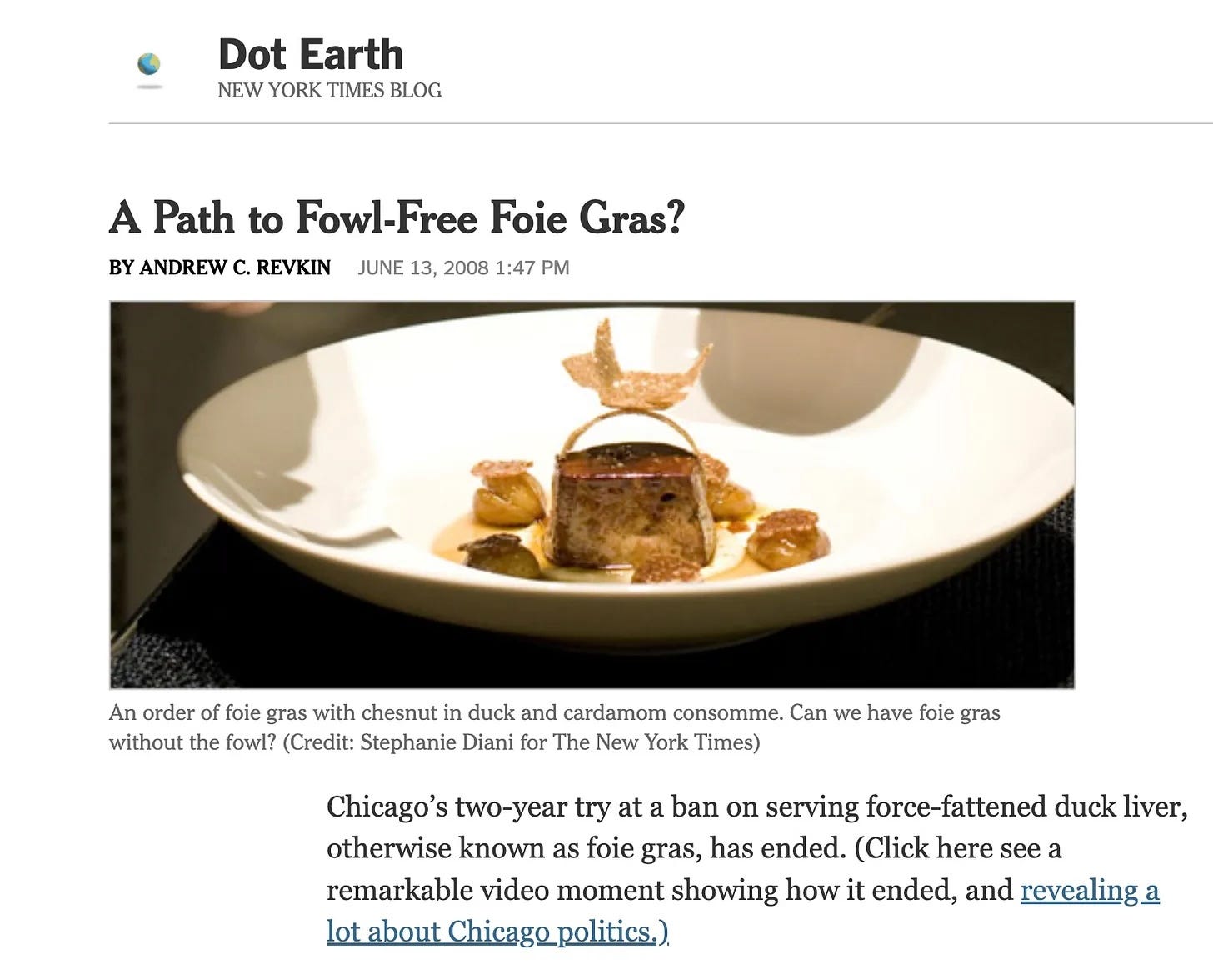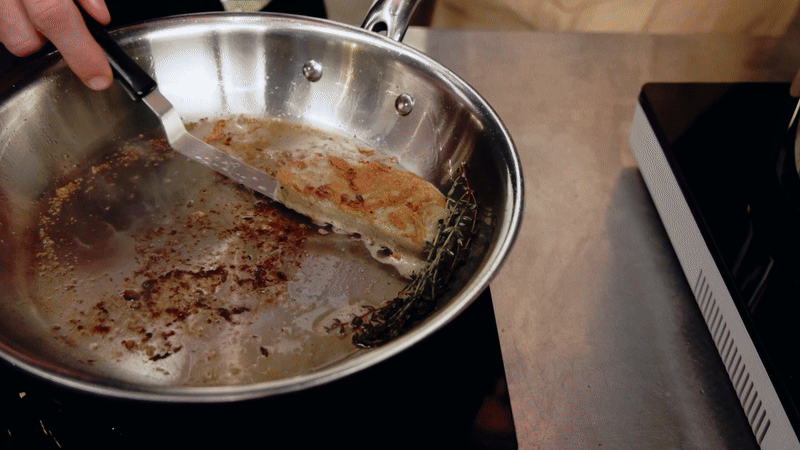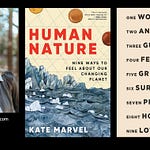Here’s the podcast post for my Sustain What conversation with Michael Grunwald, the prize-winning environmental journalist and author whose latest book,We Are Eating The Earth, explores the destructive connections between people’s plates and forces wrecking ecosystems and overheating the climate. The book also charts sustainable paths forward with no sugar coating.
Also on hand was Washington Post food columnist Tamar Haspel, who’s most recent book is To Boldly Grow. Read her columns here. They were podcasting partners for awhile on Climavores and the episodes are still fun and illuminating.
There were big differences on some issues but there was profound agreement on the reality that the status quo for agriculture and forests is making a ruin of many of Earth’s most habitable and biodiverse areas, and contributing substantially to global warming - without a suitably scaled investment in solutions or food policy.
And beef still (sorry) takes the cake as a destructive force and a source of enduringly appealing mythologies around “solutions” like regenerative cattle rearing, Grunwald says. He did note that, at the same time, intensifying production (more cattle from less land) is increasingly helping spare rain forest the Amazon River basin.
When food scale and ethics collide
We talked about climate and land harms from food but also the complex tradeoffs related to intensification of production. Ethical issues abound, as was pointed out in a question posed by my friend and past guest Zoe Weil, a vegan. Grunwald’s answer is spot on. (The picture in the background is an aerial shot of sheep by my friend and co-author George Steinmetz, whose photography book Feed the Planet, which we discussed here, is a great adjunct to this post.)
Other hurdles include:
The brutual politics of meat in America, including Florida’s ban on lab-made meat.
Polling showing the extreme resistance to raising the cost of meat for the sake of climate or other risks.
Solutions include lab-made meat - a focus of mine since 2008 or so, when I made the case for pricey lab-made foie gras as a perfect starting point.
Here’s what I proposed way back when:
[S]uppose there are alternatives to producing a delicacy like this that don’t entail penning thousands of birds in dark sheds and sticking a pipe down their throats three times a day for the last 2 or 3 weeks of their 12-week lives until their livers swell about tenfold. Remember, this isn’t just about a few rich people in Chicago. China is just getting into high gear (both on producing such food products and, with its swelling ruling class, consuming them).
I have a proposal: Keep the liver; free the ducks. This will take awhile, of course. After all, it involves the frontiers of food technology — making meat in a lab instead of a feed lot. There’s a growing international push to do this, at least for nuggets and ground meat — for both environmental and ethical reasons. People for the Ethical Treatment of Animals has even offered a $1 million reward for affordable cultivated meat.
I think foie gras could be the perfect test case, all you cultured-meat entrepreneurs. First, as I learned in college, liver is one of the most proliferative tissues on the planet (that’s one reason it’s a relatively easy organ to transplant). So presumably it’s a lot easier to culture in a vat than, say, brisket. Second, there’s none of that structure or texture issue. In fact, among the gustatory attributes of foie gras, according to leading chefs and gourmands, is the buttery lack of structure or texture. Third, it’s a high-priced delicacy, so any manufacturer need not worry about trying to bring the cost of making a meat product competitive with, say, McNuggets.
I can’t think of a better way to cut through the impassioned arguments on both sides of the foie gras trade…
Grunwald and Haspel updated me by pointing to the remarkable success, so far, of the Australian company Vow, which this spring gained approval from regulators to sell its Forged Gras, a Japanese-quail foie gras variant, which it can produce at the impressive scale of more than half a ton a week, according to The Spoon. I hope to host Peppou and other lab-food innovators on Sustain What soon.
The same technology can create meats that don’t exist in nature. To learn more, I recommend this interview with Vow’s George Peppou by Michael Wolf of The Spoon:
I hope you can take time to watch and share the full conversation with Grunwald and Haspel, which is also on YouTube, Facebook, LinkedIn or X at my @revkin account).
Thank you to everyone who tuned in live, including on Substack Live. Join me for my next live video in the app.
Here’s my highly relevant webcast with photographer George Steinmetz:
Feeding 8 Billion + on a Heating, Human-Shaped Planet
If you appreciate what I’m doing here, clicking the ♡ button supposedly boosts the post’s visibility on Substack. And of course subscribe and, if you can afford it, financially support Sustain What.

















Share this post